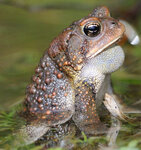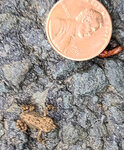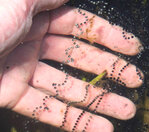In my travels during the spring, I usually notice the distinct trilling of American toads from early May until early June.
I hear the calls from lakes and ponds, but also along rivers; it seems …
Stay informed about your community and support local independent journalism.
Subscribe to The River Reporter today. click here
This item is available in full to subscribers.
Please log in to continue |



In my travels during the spring, I usually notice the distinct trilling of American toads from early May until early June.
I hear the calls from lakes and ponds, but also along rivers; it seems that the toads along the latter start calling slightly later than the toads at the former.
This spring, I heard them slightly earlier. On the 14th and 15th of April, I saw toads and heard them calling on a couple of different waterways.
On the road that ran near one pond were some adult toads that did not make it across—victims of passing vehicles. During breeding season, toads travel to moist breeding pools. There was a warm spell that week, with temperatures over 80 degrees Fahrenheit on April 13 and 14. This could have started the American toad’s breeding season a little early in the region this year.
The latter part of April saw temperatures drop, with highs in the 50s. The calls of the male toads seem to diminish somewhat during this time.
Near the end of the first week of May, the days warmed up again; temperatures exceeded 70 degrees Fahrenheit on May 7. The toads on the monitored ponds got very loud again, and there were more toads trying to cross the road next to a pond.
The calling males seemed to start quieting down after mid-May in many areas. We had a cold snap and the temperature dropped below freezing in many areas during the early morning hours of May 18.
A friend asked me if this would harm the toads. American toads are not as hardy as wood frogs, for example, when it comes to cold weather. However, they know how to find shelter if caught in a spring cold snap, and if breeding in lakes or ponds, the water itself protects toads from cold temperatures.
Most of the adult toads are out of the water by now; you may spot them in your yard or garden. They will spend the rest of the summer on dry land, seeking shaded areas in forests or near foundations of buildings, and also in fields if there is leaf litter or something similar to burrow in.
The story of the breeding toads is not over, however. The eggs that were deposited and fertilized in the ponds during May will develop into tiny toadlets by early July and emerge from the water. The toadlets will not return to the water until they are ready to breed, in two to three years.
Comments
No comments on this item Please log in to comment by clicking here